Coccomycosis of cherries and cherries: control measures - drugs for protection and treatment
If you notice that reddish-brown spots have formed on the leaves of your cherry and / or sweet cherry, and characteristic signs of sporulation of the fungus have appeared on the back side, then most likely in the middle of summer such leaves will crumble prematurely, because your cherry (cherry) is affected by coccomycosis ...
Why cherries the leaves flew around ahead of time, and already in July she stands completely "naked"?
This is coccomycosis.
Next, you will learn what coccomycosis is, how it manifests itself, what are the causes and conditions for the development of the fungus, as well as how to effectively deal with this fungal disease, what are the means of preventing and treating coccomycosis of cherries and cherries.
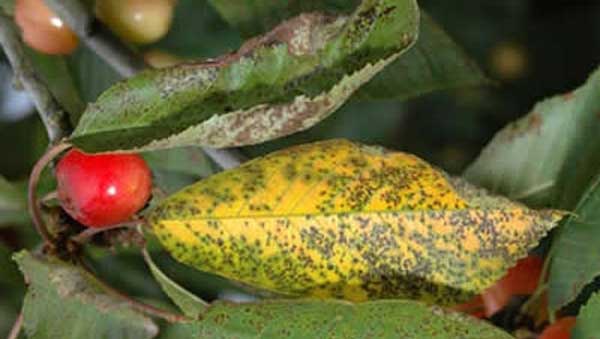
Content
What is cherry coccomycosis: signs of a fungal disease
Coccomycosis is one of the most dangerous and harmful diseases of cherries and cherries, along with clotterosporiosis and moniliosis.
Signs of cherry (sweet cherry) disease with coccomycosis:
- On the affected leaves on the front side appear small reddish-brown spots, which at first gradually increase in size, and after a while turn into necrotic formations. The leaves themselves are often turn yellow, and then fly around prematurely (already in July).
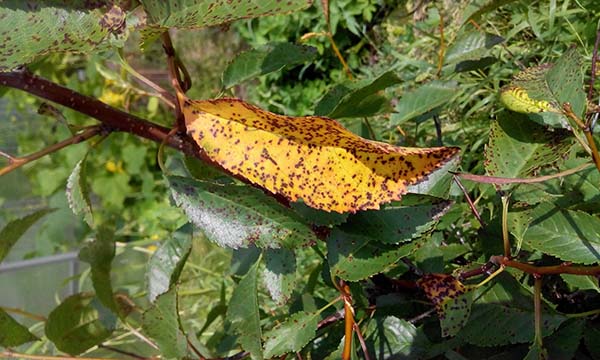
- On the lower (back) side of the sheet (with high humidity), spots are covered white pads (powdery coating) of conidial sporulation of the fungus.
- The most characteristic sign of coccomycosis is premature yellowing and leaf fall (up to 80%), which leads to serious weakening trees and often to their freezing in winter.
- In some cases, symptoms of the disease can also appear on young shoots, stalks and themselves fruits.
On the fruits, depressed brown spots with a whitish coating are formed, and the fruits themselves lose their taste and dry up (mummify).
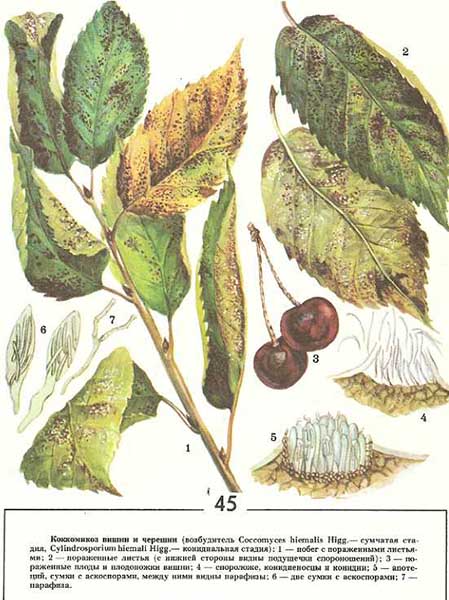
Causative agents of the diseasecausing coccomycosis are:
- marsupial stage of development - Coccomyces hiemalis Higg;
- conidial or anamorphic stage of development - Cylindrosporium hiemalle.
The spores of the fungus overwinter in the soil on plant debris and fallen leaves, in cracks in the bark, as well as in those damaged areas of branches and stems, from which gum is released (gum flow occurs).
The timing of the manifestation of coccomycosis - the first signs of the disease appear in the second half of May-early June.
Primary infection occurs in the spring, during flowering.
Conditions conducive to the emergence and distribution coccomycosis:
- relatively warm air (temperature + 19-23 degrees);
- windy and rainy weather = high humidity (dew, fog).
Spores of the fungus spread through the garden by air currents (wind), being carried along with moisture along the leaves.
Video: cherry coccomycosis
Measures and methods for the prevention of cherry coccomycosis
Unfortunately, as such, there are no effective agricultural techniques for the prevention of coccomycosis, and all you can do is plant cherry varieties that are less resistant to disease... For example, it is believed that felt cherries almost not susceptible to coccomycosis, while tree-like ones can only be tolerant. And cherries are to a lesser extent affected by coccomycosis than cherries.
Therefore, if in your area there is a high risk of coccomycosis, then you need already from early spring, start carrying out protective and preventive treatments of cherries (sweet cherries).
However, there are a few things you can do, but as you understand, these are general preventive recommendations for preventing fungal diseases of all crops.
So, some sources indicate that it partly helps:
- Autumn deep plowing of fallen leaves into the soil, its burning or removal from the site, as well as the collection and disposal of mummified fruits,
- Also, of course, you need to exercise the correct comprehensive care of cherry trees — water on time and feed (especially potassium and calcium)... In addition, cherries respond very well to liming the soil (reducing acidity)... The fact is that on acidic soils, cherries often get sick, and weakened trees are easily affected by fungal diseases.
- Another preventive measure can be mandatory whitewashing tree trunks in autumn, and the composition must necessarily include lime with iron or copper sulfate. Such treatment will destroy the wintering spores of the fungus.
When and how to treat cherries for coccomycosis
Next, you will receive the necessary information regarding the processing rules, the schedule and scheme of spraying, as well as a list and description of fungicidal agents for the protection and treatment of cherries (cherries) from coccomycosis.
How to properly spray trees
If you want the treatments to be as effective as possible and at the same time safe, you need to know and follow the basic rules and recommendations:
- While preparing solutions and spraying treesobserve safety precautions.
If the packaging of the product says that you need to wear special clothes (dressing gown, overalls, raincoat), goggles and a respirator, rubber gloves, then you need to wear it.
- Spraying is desirable in the morning (after dew has dried) or late at night (after sunset).
Too early treatment will be ineffective due to the dew that has not evaporated and the high humidity of the air.
- Trees should only be processed in dry and calm weather.
- All prepared solutions cost pass through a filter meshso as not to clog the sprayer.
- Suitable for dissolving almost all drugs room temperature water (for vitriol, it is advisable to use hot water, about + 40-50 degrees).
If you are using a biological productthen water better to take settled or filtered, i.e. chlorine free.
- At each stage, you can use like the same drugs (for the sake of economy) and new (wherein need to change active ingredientso that there is no addiction - it will be more effective), or alternate (use alternately).
During each phase, you can carry out not 1, but 2 or more treatments, if it is indicated in the instructions for the preparation, especially after flowering.
Terms and scheme of processing
The processing schedule for cherries from coccomycosis is as follows:
- First carry out early spring eradication spraying (until the buds swell = on "bare" trees). For this are used simple contact protective agents based on copper — copper sulfate or Bordeaux liquid.
- In stage "Green cone" you can also use simple contact agents based on copper (copper sulfate or Bordeaux liquid), but it would be even better to use drugs based on copper oxychloride - Abiga-peak, Hom, Oksikhom (the last one is already systemic contact fungicide).
- In phase "Rose bud" ("Separation of buds") can and should be treated with more serious systemic remedy - Topsin-M, Topaz. Or apply one of the systemic protective-healing fungicides - Horus or Skor (Raek, Keeper).
Note! Horus works greatat low positive temperatures (+5 .. +15), aSkor (or Raek, Guardian)on the contrary, it works betterat higher temperatures (from +10 .. + 15)... In short, act according to the weather.
- After flowering (as soon as all the flower petals fall off) are most often used systemic fungicides of protective and curative action - Horus or Skor (Rayok, Guardian).
Important! If there is no hint of coccomycosis on the leaves, then treatment with a copper-containing fungicide can be carried out.
- Further processing is carried out only if signs of illness appear and only systemic fungicides protectivehealing action (Skor, Rayok, Guardian).
Thus, in order to guarantee protection of your cherries from coccomycosis, you will need to carry out 2-3 preventive treatments before flowering and 1-2 after flowering.
By the way! In autumn (before or after leaf fall) it is also very desirable to spend eradication spraying of cherries and cherries.
Chemicals
Advice! During the season, you can use either one drug (for the sake of economy) orvarious (while they should not only have a different name, but also different active substance). Or you can alternate (use alternately).
The following chemical fungicides can be named as the most effective means for combating cherry and sweet cherry coccomycosis (active ingredients are given in brackets,method of penetration and nature of exposure):
- Bordeaux mixture -contact fungicide of protective action based on copper sulfate and calcium hydroxide - lime (3% Bordeaux liquid solution - before bud break and 1% - at the “rose bud” stage);
By the way! The site has a detailed article about the preparation and use of Bordeaux liquid.
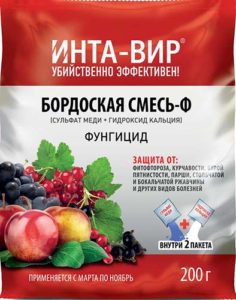
- Copper sulfate - contact a protective fungicide based on copper sulfate;
Advice! More details about the features of the use of copper sulfate readin this material.
- Abiga peak - protective contact fungicide based copper oxychloride;
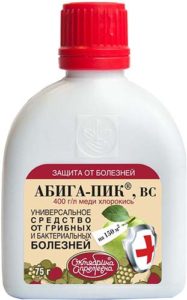
- Hom - contact fungicide protective actions based copper oxychloride;
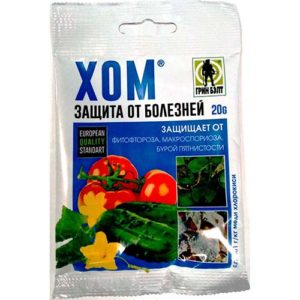
- Oxyhom - contact systemic fungicide protective actions based on copper oxychloride and oxadixyl;
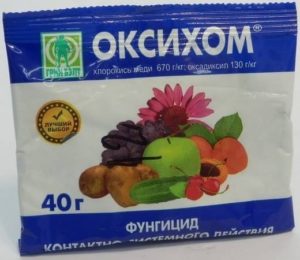
- Topsin-M - systemic contact protective fungicide actions based onmethyl thiophanate;
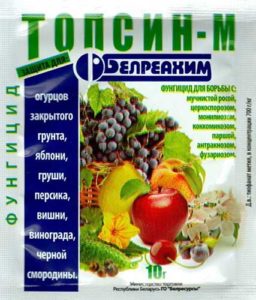
- Horus - systemic fungicide of protective and curative action based cyprodinil;
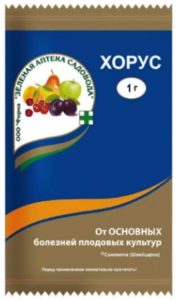
- Speed - systemic fungicide of protective and curative action based difenoconazole;
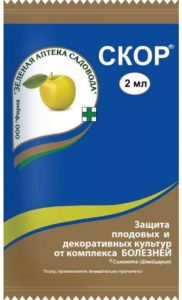
- Rajok - systemic fungicide of protective and curative action based difenoconazole;
Speed = Rayok = Guardian.
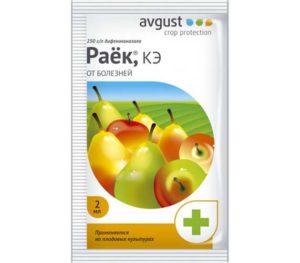
- The keeper - systemic fungicide of protective and curative action based difenoconazole;
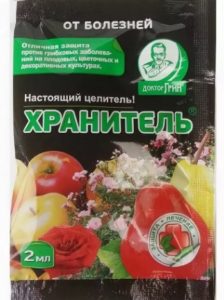
- Topaz - protective systemic fungicide basedpenconazole;
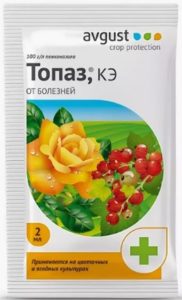
- And other contact and systemic fungicides of a wide spectrum of action.
Advice! Carefully study the instructions: the scope of the drug (against what diseases), terms (including waiting), dosage.
Biological agents
Unfortunately, it is rather difficult to name biological products with proven protective or even more healing effect against cherry coccomycosis, however, you can try the following remedies:
- Planriz or Rizoplan (Pseudomonas fluorescens strain AP-33, contact protective bio-fungicide);
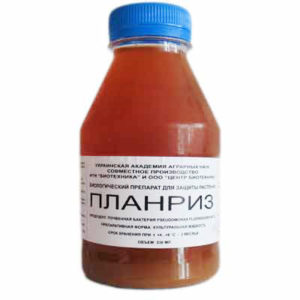
- Trichodermin or Trichoderma Veride (Trichoderma lignorum or veride, strain 471, contact protective bio-fungicide);
Advice! The effectiveness of Trichodermina can be enhanced when combined with the biological product Planriz (Rizoplan).
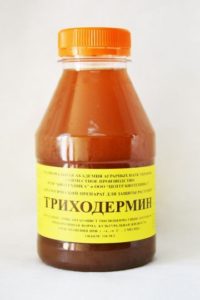
- Pentafag-S (contains virions of five strains of bacterial viruses, as well as biologically active substances; contact bio-fungicide of protective and therapeutic action);
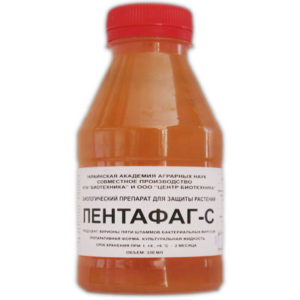
- Fitosporin (Bacillus subtilis strain 26 D, systemic fungicide of protective and curative action);
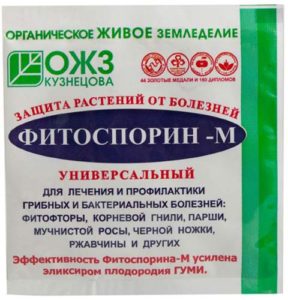
- Gaupsin (insectofungicide).
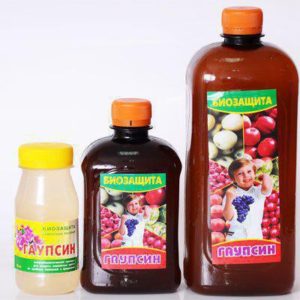
It is worth understanding! Biological agents are mostly recommended for prophylactic purposes or at very early stages of the development of the disease, when the lesion is still insignificant.
We hope that now you understand the importance of preventive treatments for cherries and cherries against this harmful disease. You just have to choose the most suitable (including cost) means for the protection and treatment of cherry coccomycosis, preferably at least 2, and in the spring it is correct and timely to spray, and then wait for the results.
Video: cherry diseases - coccomycosis

